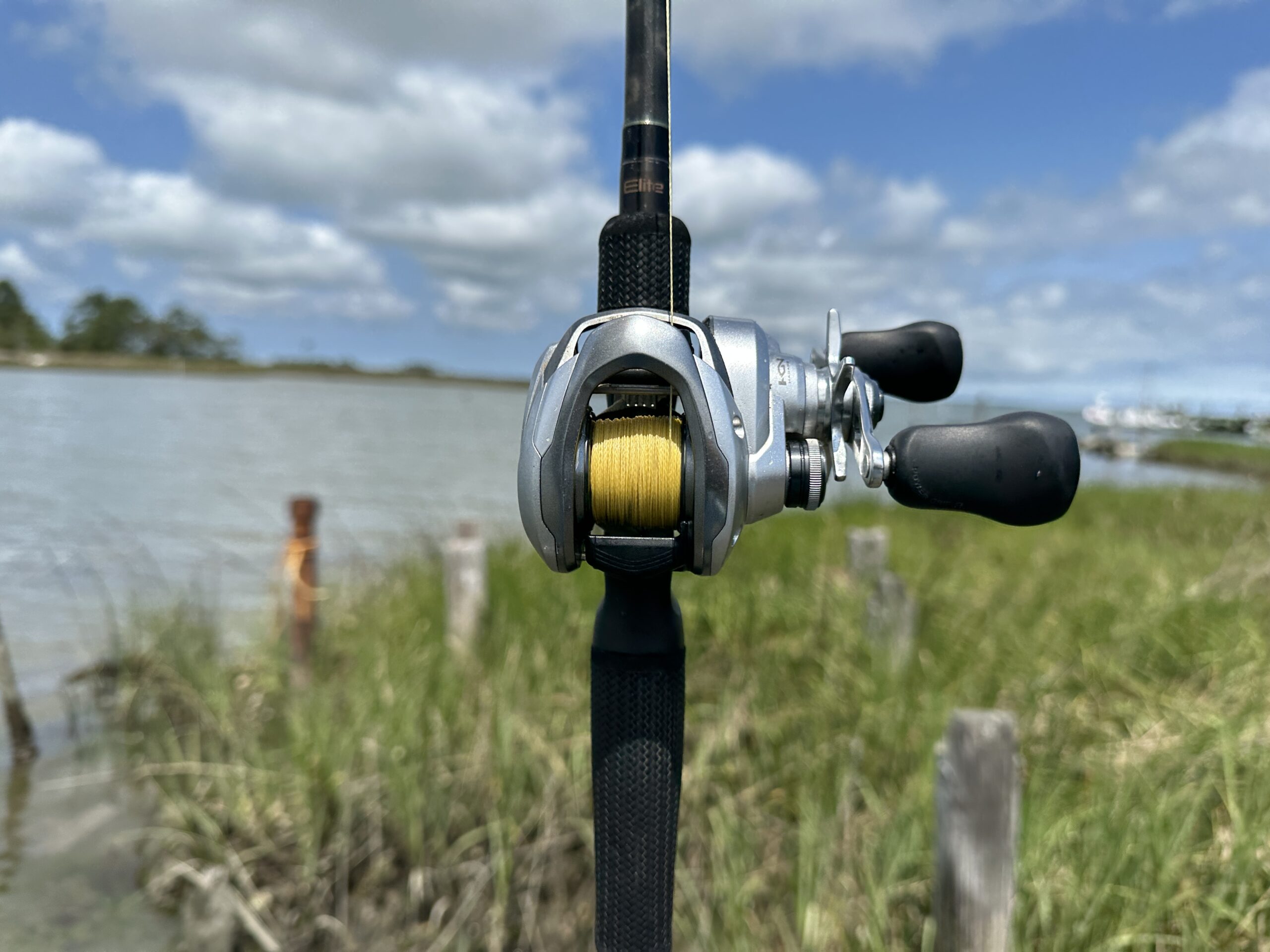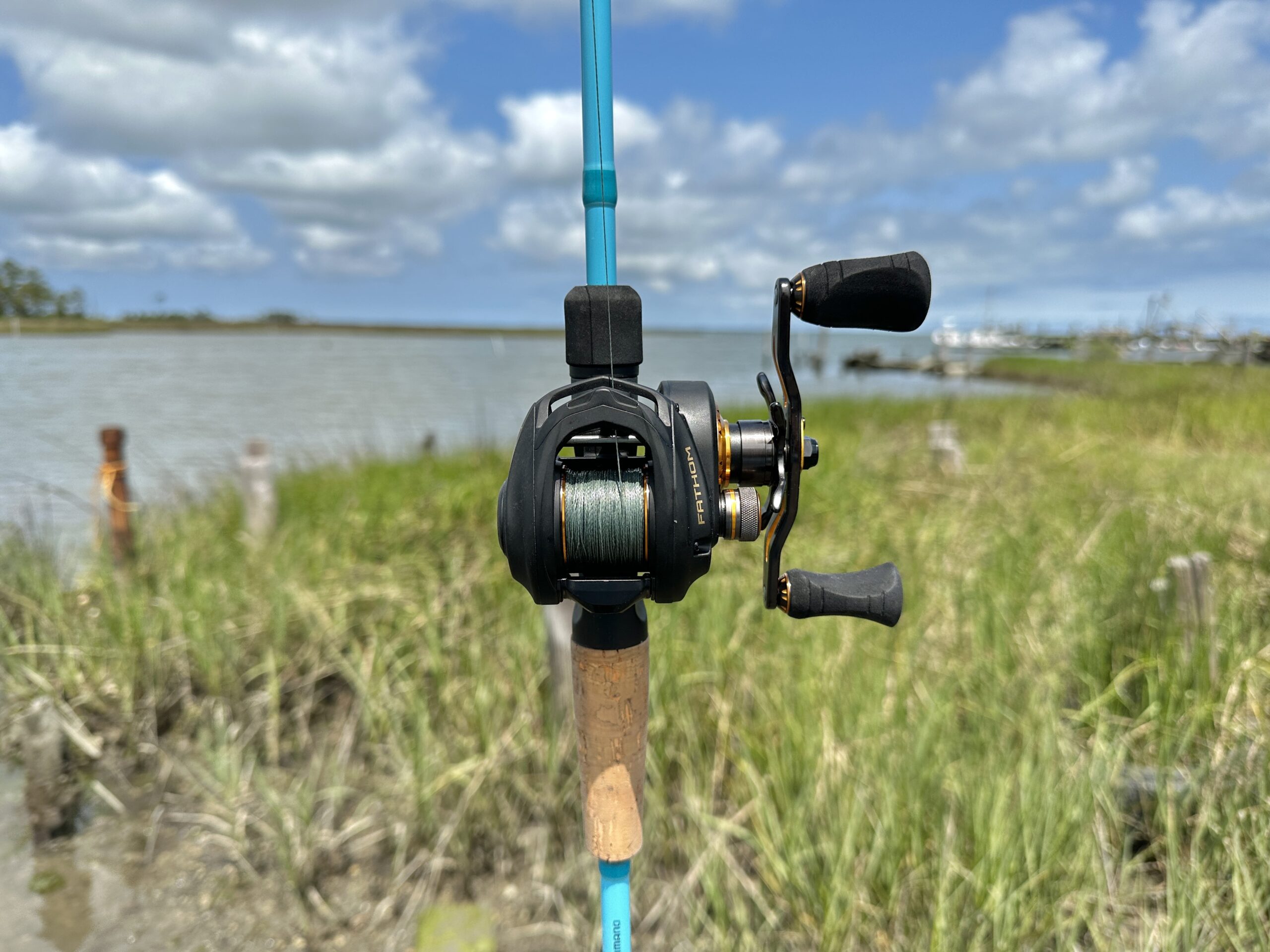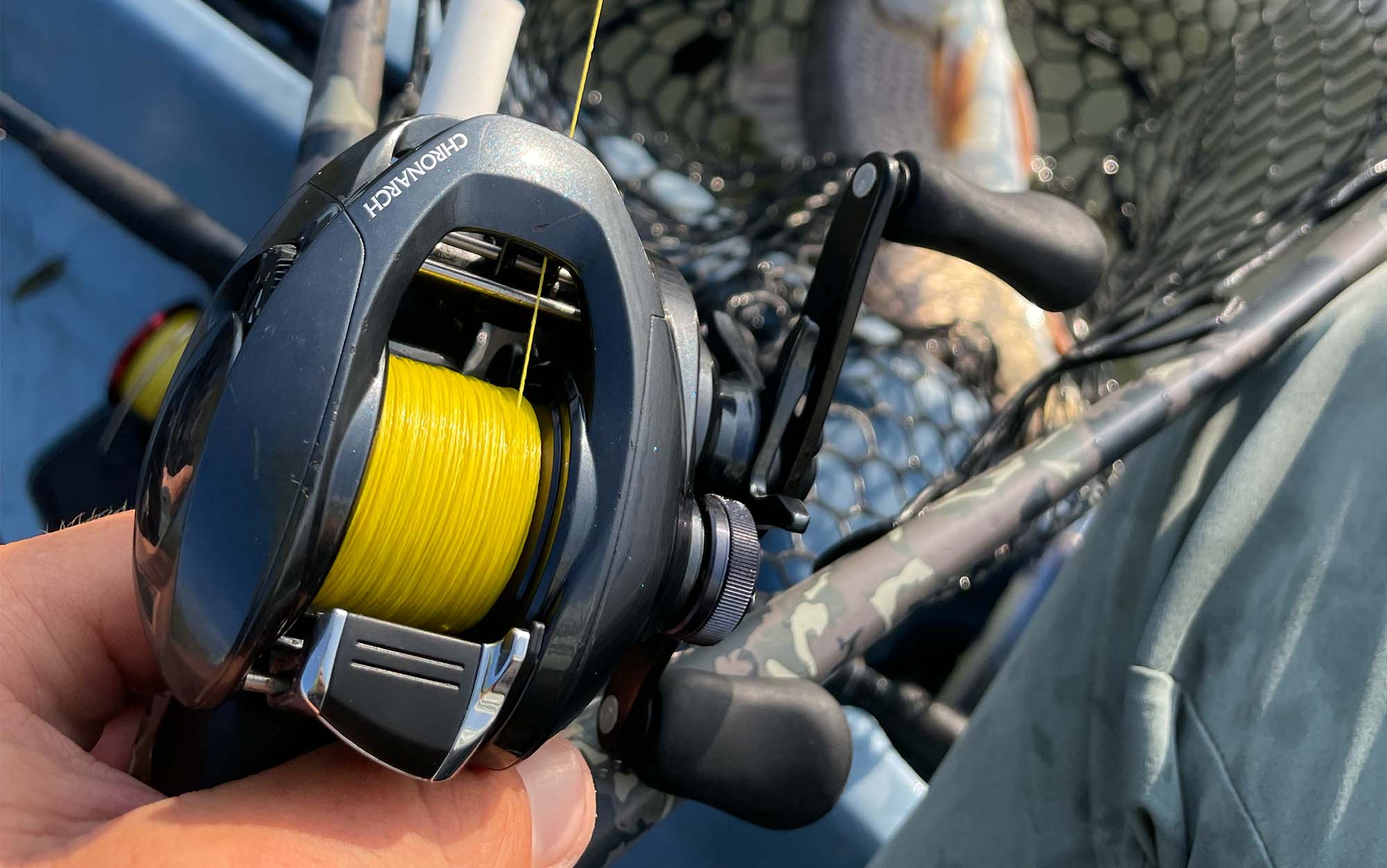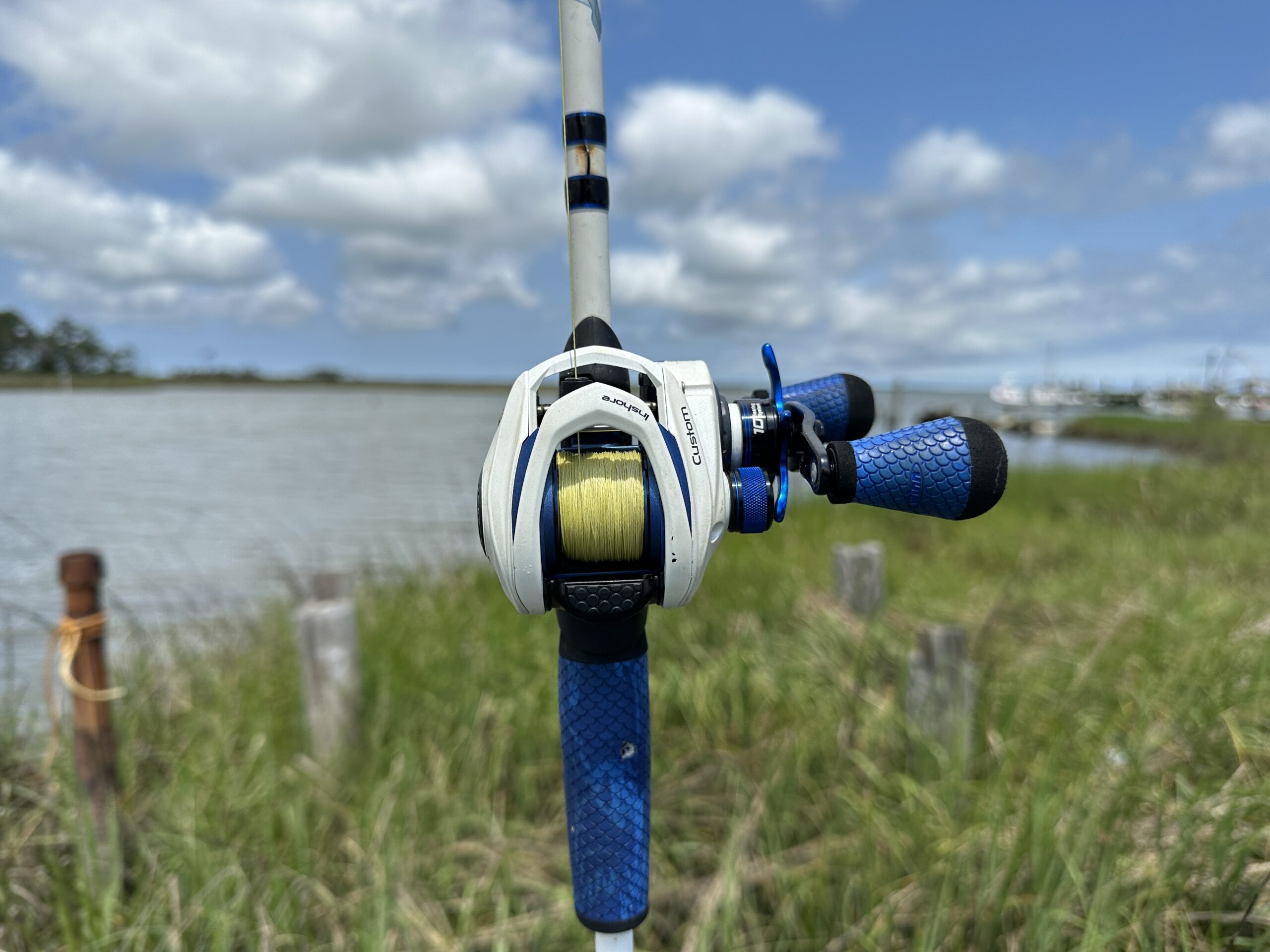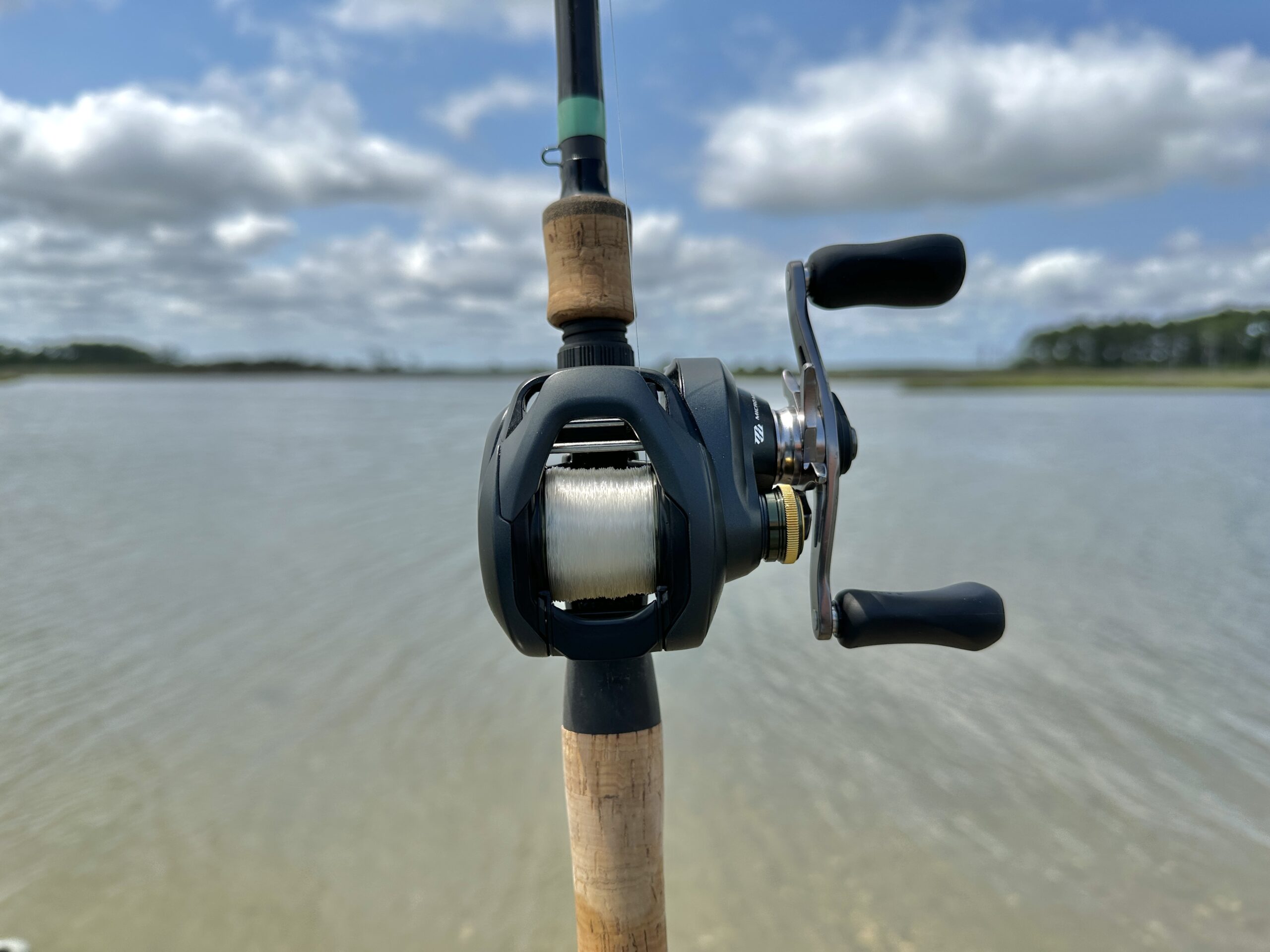We may earn revenue from the products available on this page and participate in affiliate programs. Learn More ›
Published Jun 26, 2023 6:43 PM
While I’m sure plenty of our West Coast saltwater anglers will disagree, the reality is that baitcasters have been made and marketed primarily for the freshwater world for quite some time. Sure, you’d find the occasional angler dedicated to using them, but most inshore guides and anglers had a quiver full of spinning gear and not much else.
Today a renaissance of sorts is happening in the inshore angling world. New materials and high-end machining techniques have paved the way for low-profile baitcasters that are not only built for heavy saltwater use but excel in it. Slowly but surely, low-profile baitcasters have found their way into the regular rotation of many inshore anglers. Modern inshore gurus like Captain C.A. Richardson have embraced them to the point where they rarely use spinning gear.
With this new age of inshore baitcasters has come a bevy of reel options on the market. Finding the right low-profile baitcaster can be challenging, and making the wrong choice could lead to a disastrous day on the water. To help you make that decision, I tested many of the top low-profile saltwater baitcasters on the market and sat down with guides and anglers who use them daily. Through this process, I’ve compiled a list of the best saltwater baitcasting reels for every type of salty situation you might encounter.
How I Chose the Best Saltwater Baitcasting Reels
Having spent most of my life fishing saltwater from Texas up through Virginia and everything in between, I’ve seen firsthand what happens when reels get exposed to salt over time. This experience helped me better evaluate the reels we tested, looking for key qualities and specs that made them suitable for the task. Components such as drag material, gearing, and frame material were critical. Functionality like drag pressure, brakes, and retrieve ratio were also key factors for consideration.
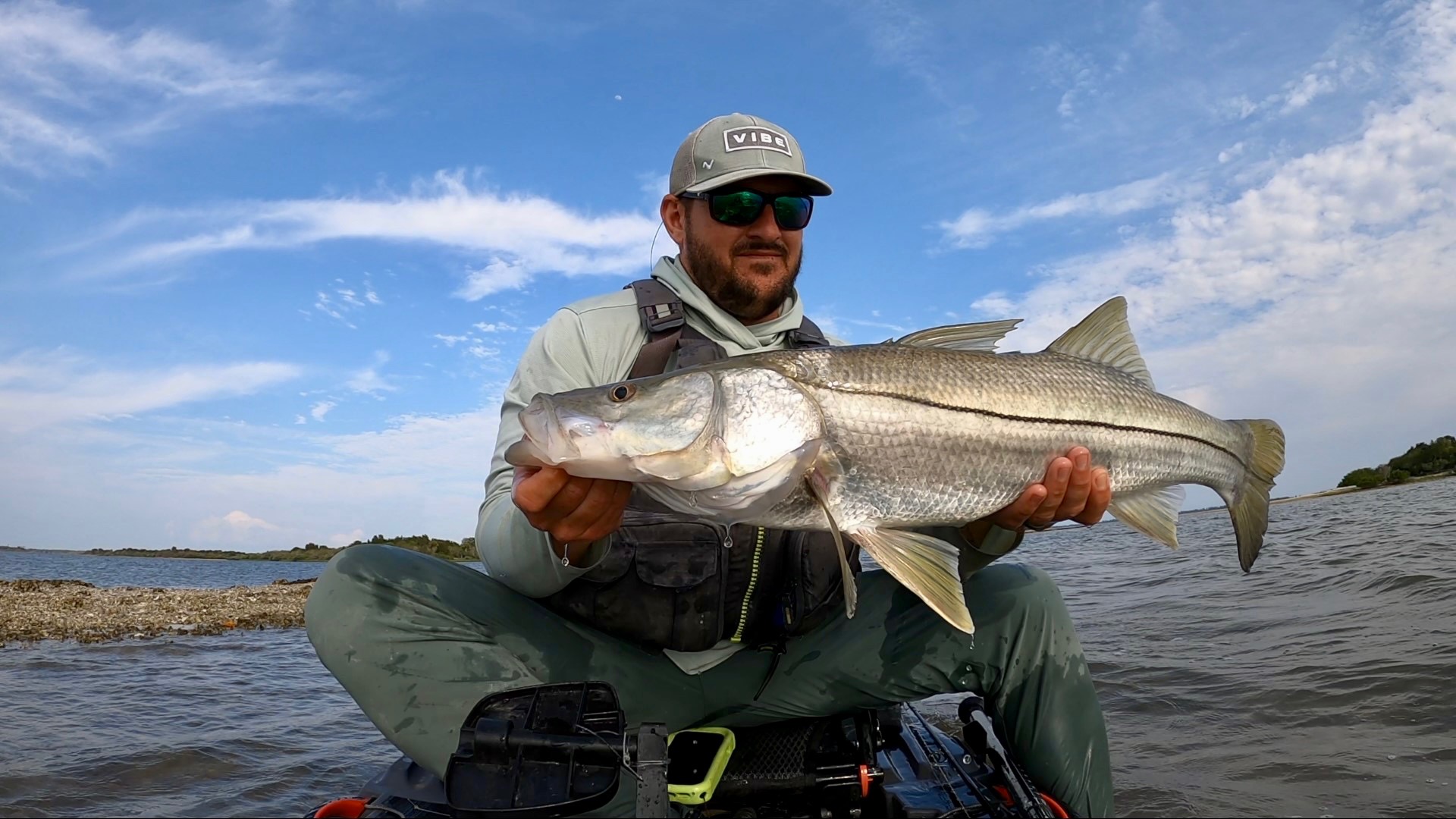
Of course, specs only take you so far, so I also put these reels through the paces with real-world testing. Over several months, these reels got used in a variety of inshore environments, from the marshes of the Outer Banks in North Carolina, the flats of Biscayne Bay and the Everglades in Florida, and the oyster-filled backwaters of the Chesapeake Bay in Virginia. We caught everything from speckled trout and redfish to snook, tarpon, and striper. Through this process, gear editor Scott Einsmann and I were able to dial in just what makes these reels tick and what they are each best suited for during a day on the water. Using that knowledge and interviews with inshore baitcaster experts like Captain C.A. Richardson of “Flats Class TV,” I compiled this breakdown to help you understand what to look for when choosing a low-profile reel.
Best Saltwater Baitcasting Reels: Reviews and Recommendations
Best Overall: Shimano Tranx
Key Features (150HG size):
- Weight: 6.7 ounces
- Line Capacity: 150 yards of 20-pound braid
- Bearings: 3+1
- Max Drag: 13 pounds
- Gear Ratio: 7.2:1
- MSRP: $219.99
Pros:
- Extremely durable
- High-end gearing and seal
- Lightweight
- Smooth
- Large range of sizes (150-500)
Cons:
- Limited drag strength
- Limited tuning ability
The Tranx lineup from Shimano has gained a well-earned reputation for withstanding anything thrown at them. The smallest reel in the series, the 150, is no exception. Despite its lightweight and smaller size, this reel still feels rock solid in your hand. It’s designed to cast and fight fish in the salt all day, every day.
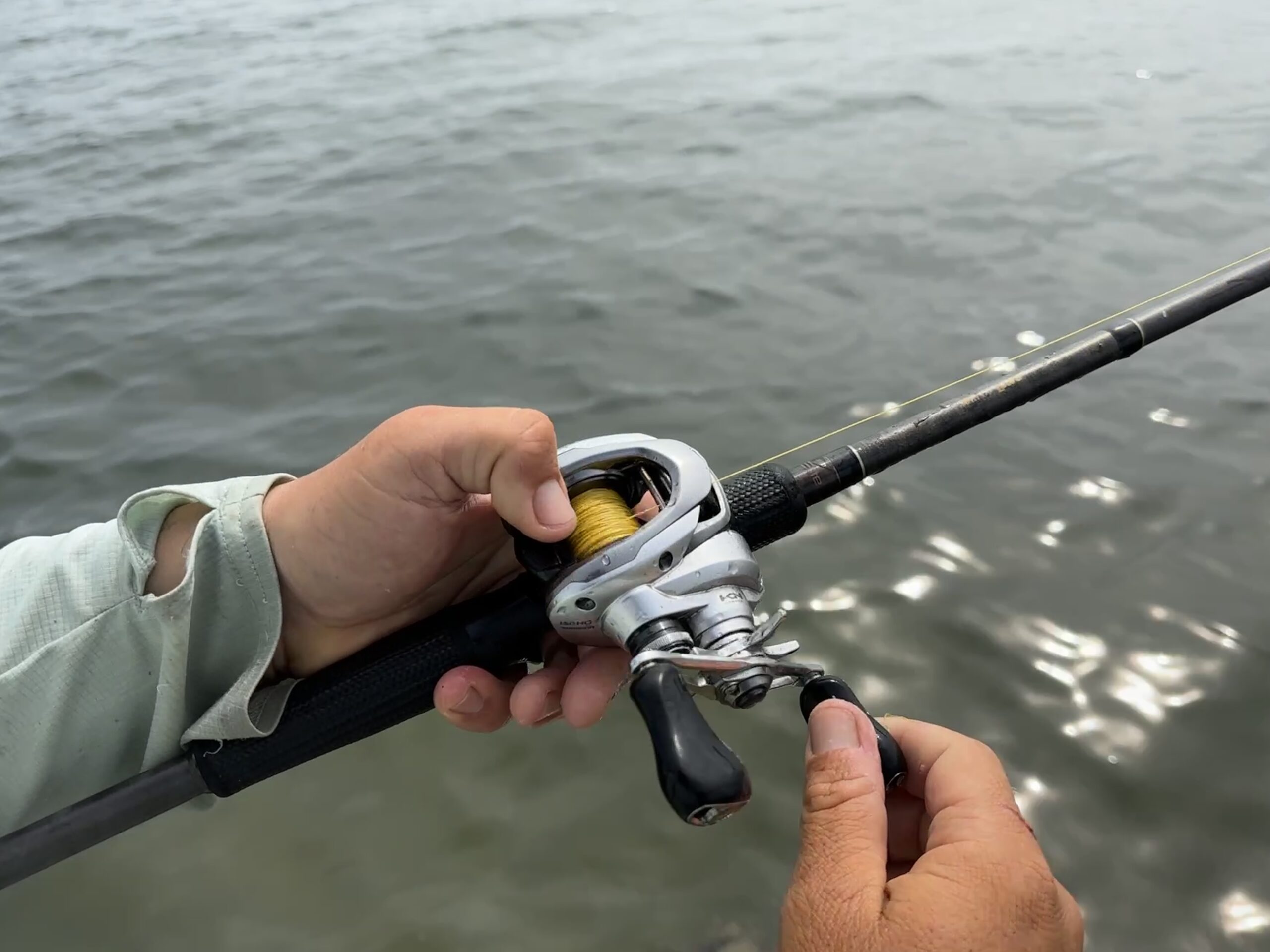
The Tranx 150 is a reel for anglers pushing their gear to the limits. It lacks some of the smoothness and featherlight feel of the Chronarch G, but it more than makes up for its durability. The delicate internal components are housed within a rigid metal frame that prevents flex and warping, making this reel ideal for intense fights and long days on the water. It also utilizes Shimano’s CoreProtect technology, which is a protective coating that prevents corrosion and adds extra strength to the core components of the reel.
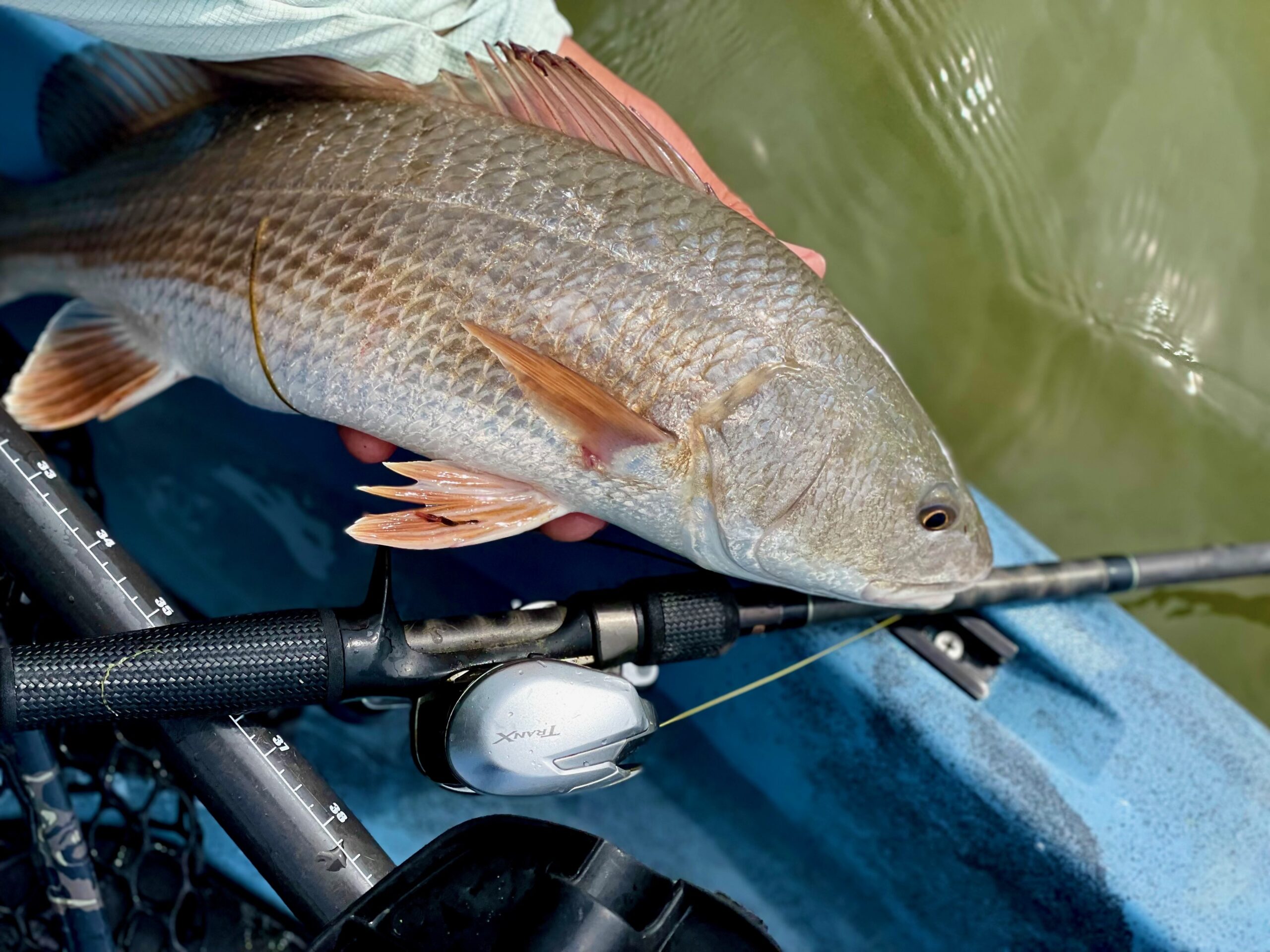
While the reel does boast a smooth carbon dag, the stopping power is somewhat lacking at 13 pounds. That’s not terrible, but it is a little less than one would expect for a reel designed with such heavy-duty use in mind. That said, this reel will have more than enough power for most inshore applications. Additionally, the Tranx comes in several sizes, from 150 all the way up to 500. The 150 is ideal for inshore casting applications, the 300 is perfect for bucktailing fluke and throwing big topwaters for stripers, and the 400 size with the power handle is the best saltwater baitcasting reel for deep jigging. The larger sizes provide significantly more drag and are a great option for expanding beyond light inshore use.
Read Next: Best Saltwater Fishing Rods
Best for Jigging: Penn Fathom
Key Features (300 size):
- Weight: 9.2 ounces
- Line Capacity: 310 yards of 20-pound braid or 240 yards of 12-pound mono
- Bearings: 6+1
- Max Drag: 30 pounds
- Gear Ratio: 7.3:1 or 9.2:1
- MSRP: $269.95
Pros:
- Extremely strong drag
- Impressive gear ratios and retrieve rate
- Incredible line capacity
- Large range of sizes/specs
Cons:
Penn has long been a staple in the saltwater world, with its line of spinning and conventional reels setting the standard for balancing cost with performance. Despite this, they’re relatively new to the low-profile baitcaster scene, but you’d never know it after using the Fathom. This reel is packed with all the quintessential Penn traits that make it feel like a true saltwater tool while still maintaining an impressive balance and comfort that are essential to low-profile reels. It’s a powerful, comfortable reel ideal for cranking on big fish at depth.
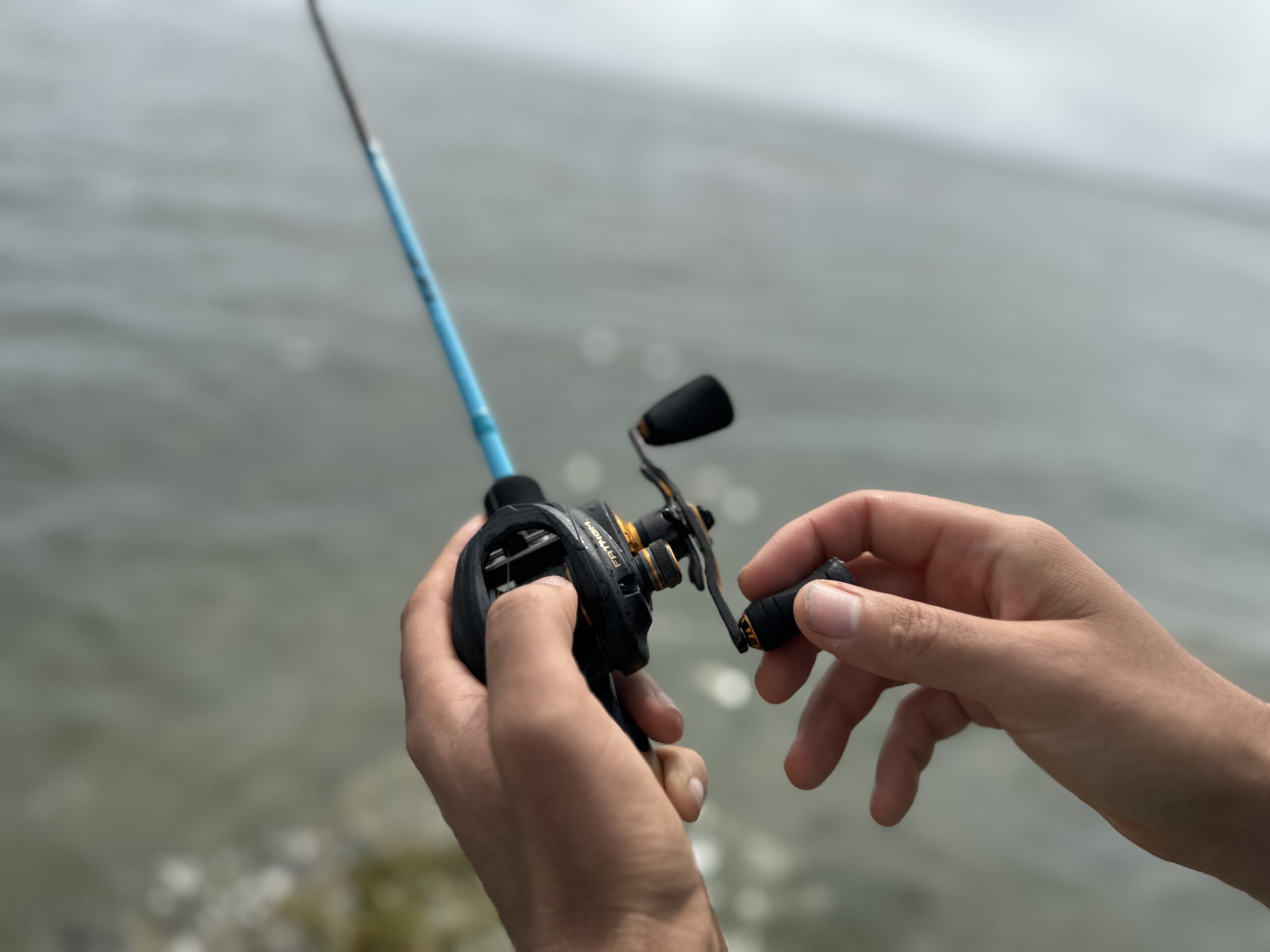
With a full metal body and beefy frame, the Fathom feels like a workhorse. This saltwater baitcasting reel boasts 30 pounds of drag strength, it’s easily the top of this list when it comes to pulling ability. With the 9.2:1 ratio model also reeling in a ridiculous 43 inches of line per crank, this reel is tailor-made for jigging and bottom fishing. Add to that the enormous line capacity, and you have a reel that can winch up powerful fish at depth.
All that power and strength does come at a cost, unfortunately. This reel is much heavier than other reels in the class, making it tough to imagine casting all day long. It also lacks the smooth feel and finesse qualities of the other inshore low-profile reels on this list. Ultimately, this reel is designed with jigging in mind, and that’s where it will excel.
A unique combination of power, torque, and comfort, the Fathom is a versatile option for anglers looking to fish inshore to nearshore wrecks and reefs.
Read Next: Best Saltwater Spinning Reels
Best Finesse Inshore Reel: Shimano Chronarch G
Key Features (150HG model):
- Weight: 6.5 ounces
- Line Capacity: 150 yards of 20-pound braid, 120 yards of 10-pound mono
- Bearings: 8+1
- Max Drag: 11 pounds
- Gear Ratio: 7.1:1
- MSRP: $299.99
Pros:
- Extremely lightweight
- Durable salt-resistant Ci4+ carbon frame
- Exceptionally smooth
Cons:
- Limited drag capacity
- Limited size range
- Expensive
Simply put, this saltwater baitcasting reel is a joy to fish. Its lightweight design and ultra-smooth feel make it one of the most comfortable reels I’ve ever used inshore. It’s loaded with advanced modern reel technology and has proven quite capable of handling long days on the salt. It’s the ideal reel for casting lighter lures and finesse fishing inshore.
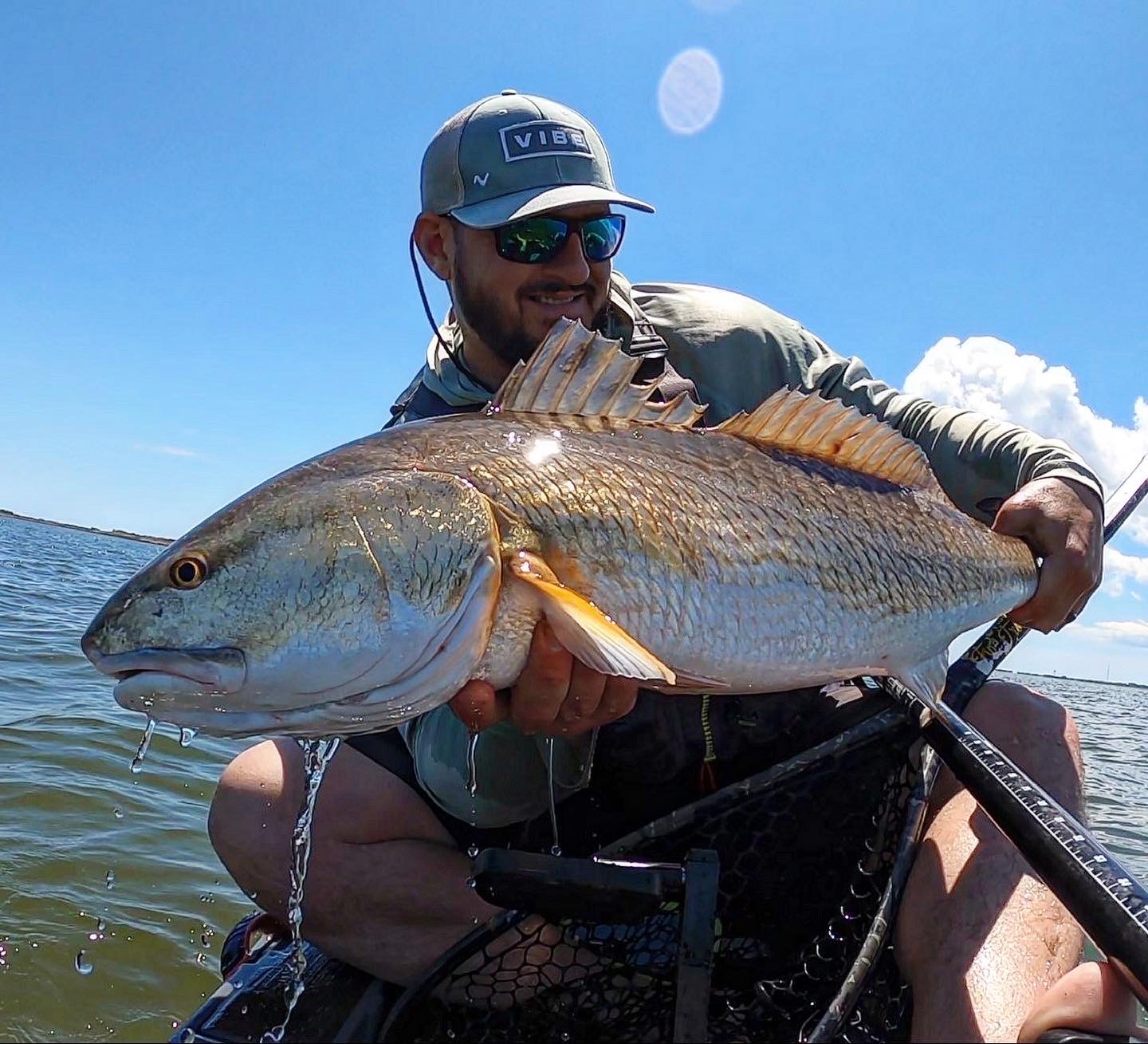
The Chronarch G is made of ultra-light yet durable carbon material and features MicroModule gearing, which makes this reel as smooth as it gets. It also has a buttery soft feel on the cast. I’ve cast everything from light swimbaits to heavy topwaters on this reel, and the braking system was easy to tune to keep the spool backlash-free. Despite its lightweight feel and complex gearing, this reel is sealed and durable, designed to withstand inshore saltwater use.
The 11-pound drag strength won’t stop big fish from heading back into the magroves or around bridge pilings. That said, as a reel aimed primarily at light inshore use, the drag isn’t as critical as overall performance. The narrow spool also helps the reel with casting accuracy and allows the use of lighter lines.
Read Next: Best Saltwater Fly Rods
Lew’s Custom Inshore
Key Features (CI1SH model):
- Weight: 6.9 ounces
- Line Capacity: 140 yards of 50-pound braid, 140 yards of 12-pound mono
- Bearings: 9+1
- Max Drag: 20 pounds
- Gear Ratio: 7.5:1
- MSRP: $219.99
Pros:
- Strong drag
- One-piece aluminum frame
- Lightweight
Cons:
- Not very smooth
- Limited size range
Despite being known as a primarily freshwater brand, Lew’s has ventured into the saltwater world with the Custom Inshore lineup. The Custom Inshore baitcaster is a solid, quality reel. It’s a great inshore reel for someone just dipping their toe into the saltwater baitcaster game.
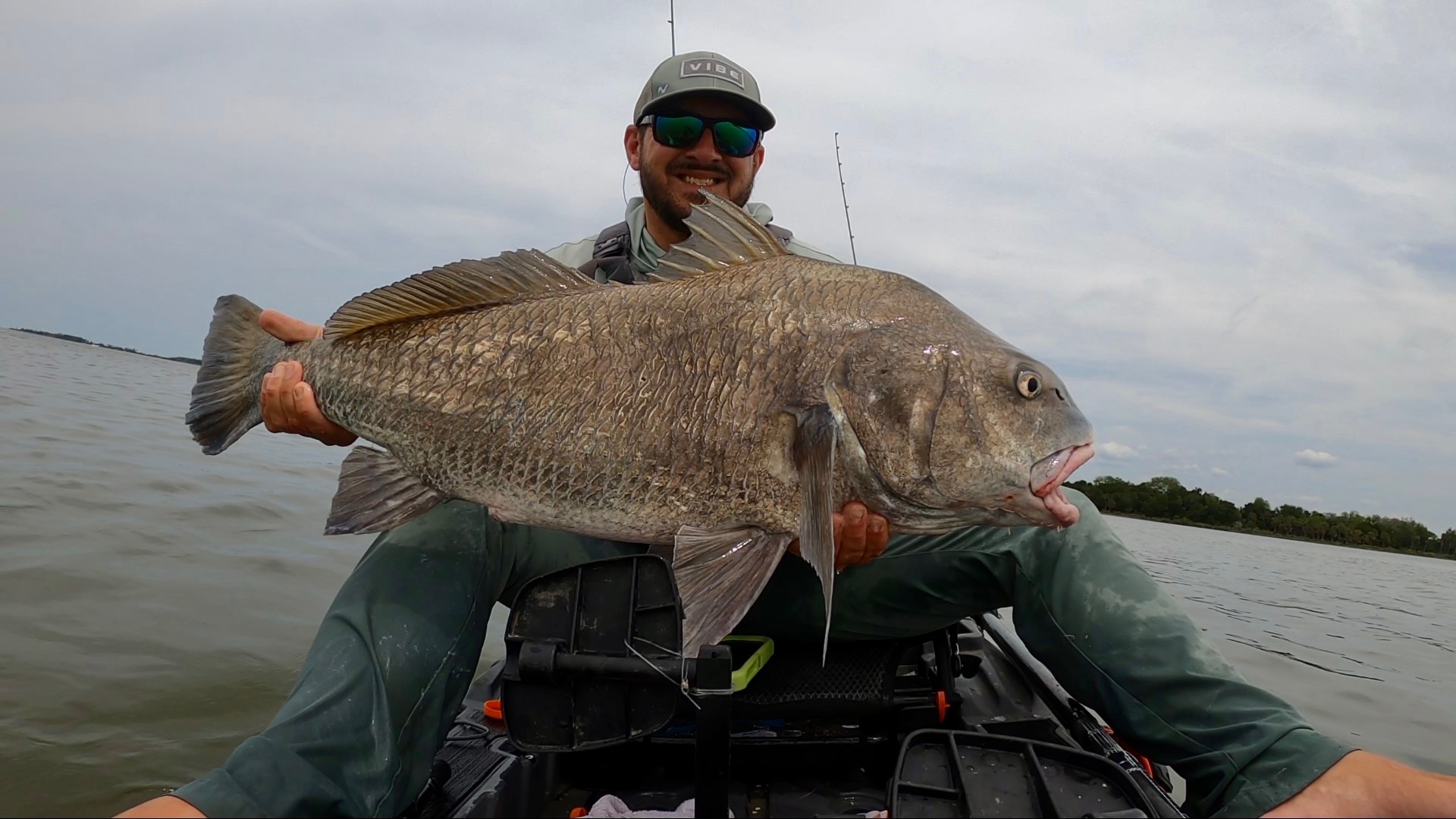
Lew’s has always been known for providing anglers with quality gear at lower-than-average prices. The Custom Inshore reel is their attempt at doing this for the saltwater angling crowd, and it accomplishes that goal well enough. Made of anodized aluminum with a carbon sideplate on the handle side and graphite sideplate for palming, the frame is durable enough to withstand abuse. The carbon fiber drag system is a highlight, providing a remarkable 20 pounds of drag. This reel also provides a relatively high line capacity for a low-profile inshore reel, allowing it to be used for a wider range of applications inshore.
While the drag is smooth, the casting and retrieving feel slightly clunky. Additionally, while the reel isn’t technically very heavy, its balance and frame feel a bit ungainly in the palm when compared to some of the more expensive reels on this list. Despite the drawbacks to this reel, the positive features more than balance it out. While I don’t recommended it if you plan to cast all day, the Lew’s Custom Inshore is the perfect option if you’re looking for a quality reel for casual use.
Shimano Curado K
Key Features (200HGK model):
- Weight: 7.6 ounces
- Line Capacity: 190 yards of 30-pound braid, 155 yards of 10-pound mono
- Bearings: 6+1
- Max Drag: 11 pounds
- Gear Ratio: 7.4:1
- MSRP: $199.99
Pros:
- Good line capacity
- Good range of sizes and gear ratios
- Reasonably priced
- Smooth
Cons:
- Limited drag capacity
- Heavier than similar models in class
The Curado series is one of Shimano’s mainstays, building a reputation for reliability over the years. The lineup is a staple for many anglers, and the most recent iterations should do nothing to change that. The Curado is a solid, reliable, and comfortable reel at a reasonable price point.
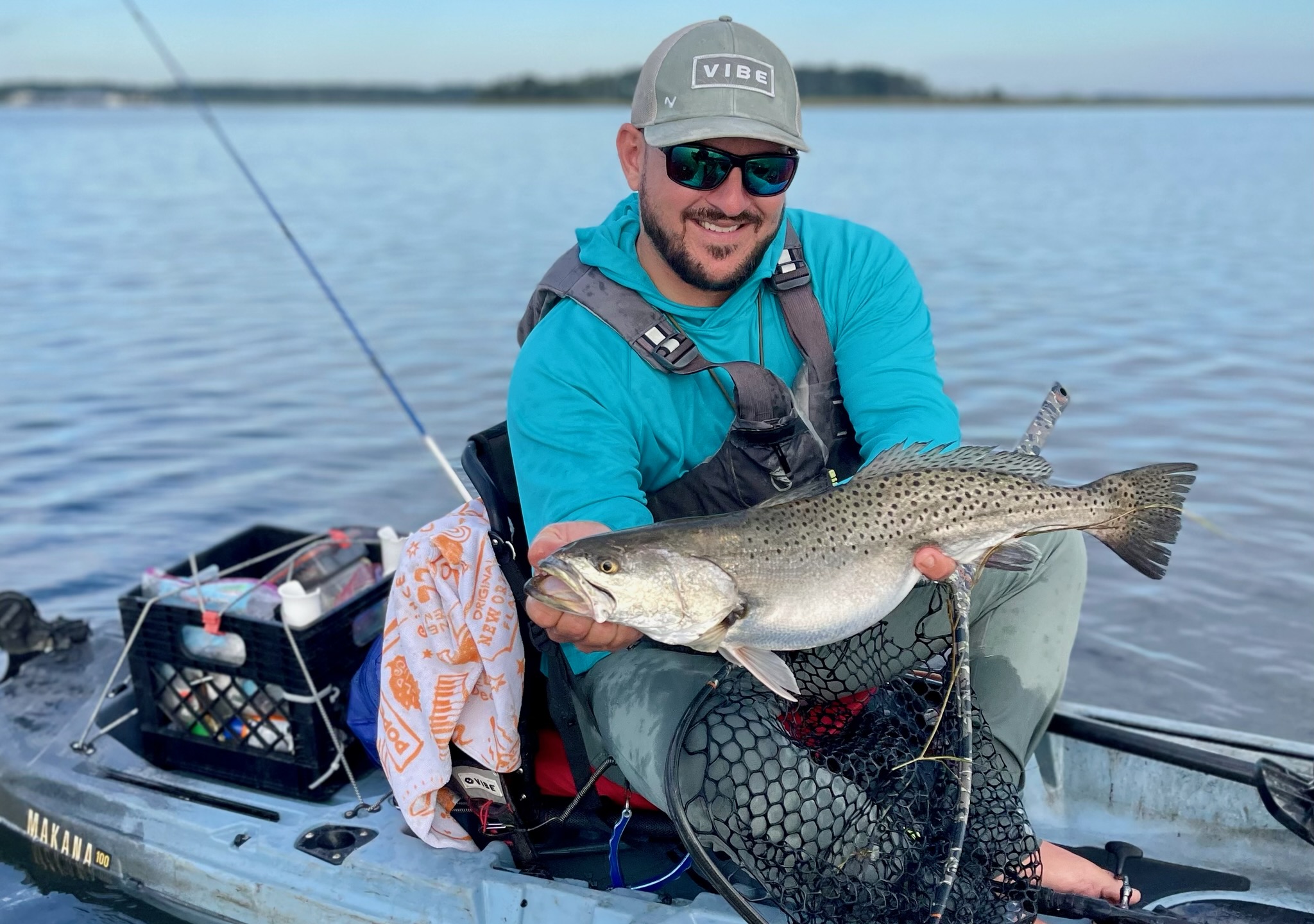
The Curado K series comes in a wide range of sizes and gear ratios, making it a versatile option for anglers looking to get into the low-profile saltwater game. It features many of the same high-end technology found in the pricier Shimano reels on this list, including MicroModule gearing, X-Ship, and the SVS Infinity braking system. The Curado K is also slightly smaller than previous versions, making it a very comfortable reel to fish and allowing for a high degree of control.
While the more modern options in Shimano’s lineup, like the Tranx, have started to steal the show somewhat, the Curado’s reputation and quality will always have a place for many anglers. Simply put, it’s a quality reel that has very little downside at a reasonable price. I think the Curado K is the best saltwater baitcasting reel for someone who bass fishes some weekends and fishes inshore fishes on others.
How to Choose a Saltwater Baitcasting Reel
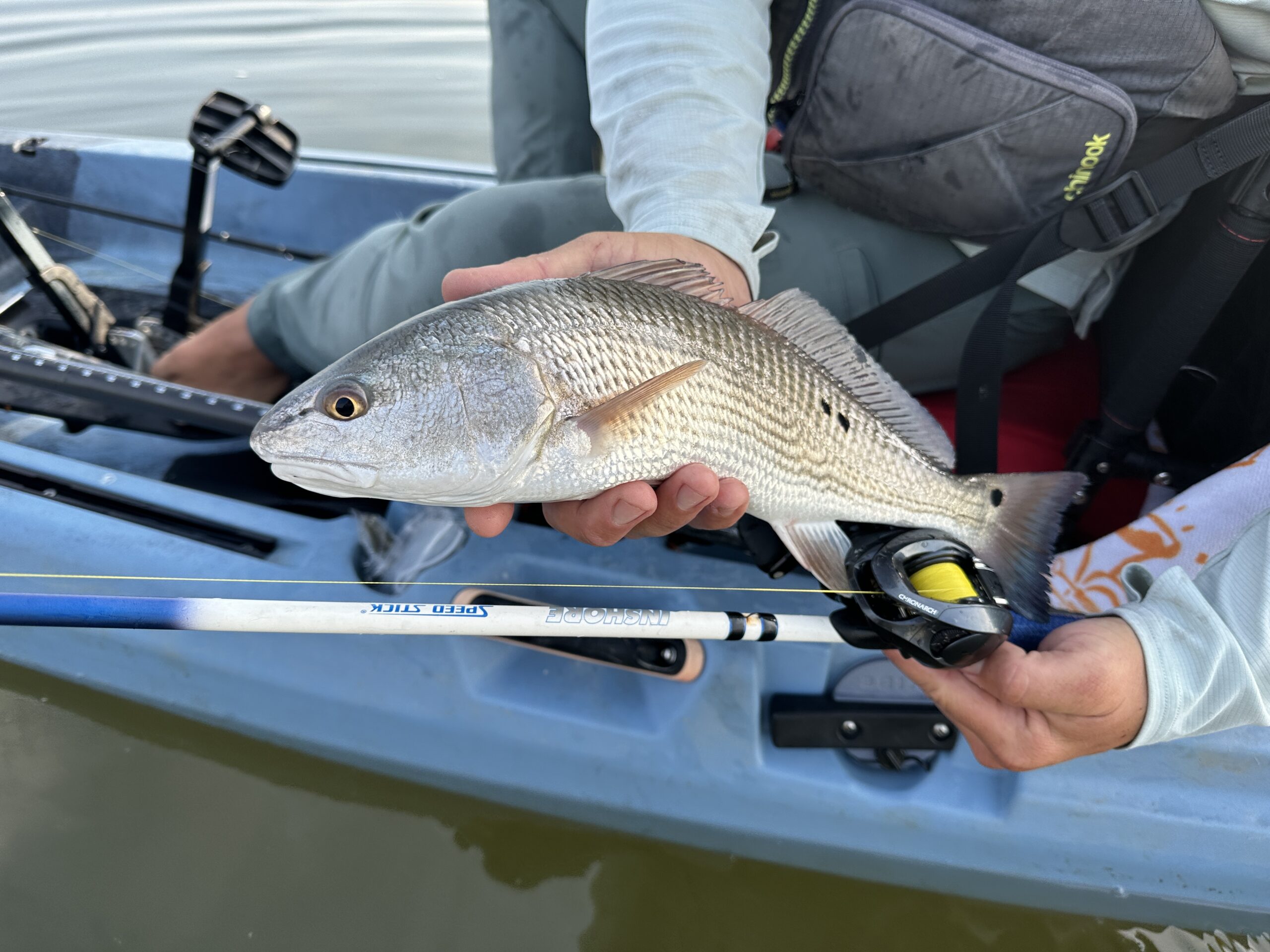
Spinning reels became the standard inshore reel for saltwater for many reasons, but simplicity was a big factor. While having loads of dials and gears allows for baitcasting reels to be fine-tuned, they also leave the reels vulnerable to breaking down in ways that most spinning reels simply aren’t.
Interestingly enough, that wasn’t always the case. For years, the original Everglades angling pioneers, legends like Flip Pallot, preferred to use baitcasters on short pistol-grip rods. These were the ideal tools to dissect the mangroves and wench trophy snook and tarpon from their hiding places. At some point, these setups fell out of favor, and the era of low-profile baitcasters inshore seemed to be no more.
Fast-forward to today, and that’s no longer the case. Modern baitcasters have surged in popularity and revolutionized the inshore game. However, choosing one can be a little trickier than purchasing a spinning setup. Despite their complex nature, the key factors for choosing a baitcaster are essentially the same as any other saltwater reel.
The right choice is usually decided by how often you’ll be using it and what you’ll be using it for. If you’re targeting hard-fighting fish like snook on a regular basis, things like drag strength and retrieve ratio are more important. If you’re only getting out a few times a year after less formidable species like speckled trout, something that’s lighter and more comfortable to cast may be a better choice.
Then there is the salt factor. Unlike bass fishing, inshore baitcasters need to be able to withstand the elements at a much higher level. Salt corrodes everything it touches, and a complex bit of machinery like a baitcaster can be extremely vulnerable to deterioration. Corrosion-resistant materials and a quality seal are at the top of the list of important features to consider.
FAQs
What are the advantages of using a baitcaster versus a spinning reel?
Captain C.A. Richardson primarily uses low-profile reels inshore, and he was able to shed some light on many of their benefits. “They offer a much greater degree of control over your lure,” Richardson says. “The ability to dictate the lure speed and action is light years ahead of what can be done with spinning gear.” He was also adamant about casting accuracy being critical, and a low-profile baitcaster allows him to put lures where they need to go faster and easier than a spinning reel would. Lastly, Richardson brought up the many line-related benefits of using a low-profile baitcaster. He’s an advocate for using fluorocarbon lines on his reels, as it allows for stealthier presentations to spooky fish. “You can’t spool a spinning reel with straight fluorocarbon,” he says, “it’ll twist and shoot off the spool, leaving a tangled mess.” He also brings up the fact that you can spool a baitcaster with a line nearly double the strength of what a spinning reel can hold while maintaining casting distance and accuracy. This gives him a much higher degree of confidence if he hooks into larger fish around the structure.
How should I clean and maintain my reels?
While it’s standard practice to hose down most reels after saltwater use, Richardson says he no longer does this with his baitcasters. “I prefer to take a wet rag and simply wipe down the outside of the reels. Spraying them with a hose will push the salt deeper into the components and allow them to break down faster.” He also highly recommends using an oil-based lubricant product, such as Clenzoil, to apply to the outside of the reels and help protect them from the salt.
What is the ideal rod to pair with a low-profile reel inshore?
When it comes to an ideal all-purpose rod setup for a 150 to 200 size low profile reel, Richardson recommends a classic 7-foot Medium Fast or Extra Fast rod. If he’s throwing larger lures or using a heavier reel, like a 300 or 400 size, he’ll step it up to a Medium Heavy in the same length range. A 7-foot rod provides the most versatile platform for the widest variety of lures and presentations and is extremely capable when it comes to handling big fish.
Final Thoughts on the Best Saltwater Baitcasting Reels
While spinning reels remain the most popular option, all saltwater anglers should consider trying one of the best saltwater baitcasting reels. Once you’ve gotten comfortable with one, you’ll find they are more than worthy of a place in your lineup.

